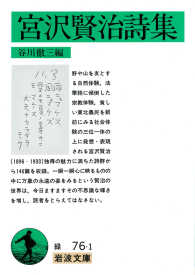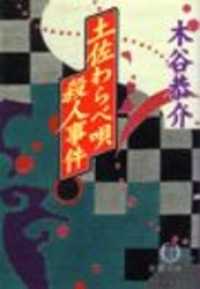基本説明
Examines the ways in which the U.S. Air Force as an institution must adjust to meet the operational demand of network-centric warfare in the imformation age.
Full Description
Toward the end of World War II, the commander of the Air Corps, General Henry Hap Arnold, remarked: Someday . . . the man holding my job will meet here with a staff of scientists, and they will wear no pilot's wings on their chests. That day may be near. Here, Collins reveals the emerging challenges posed by cyberspace to the traditional culture of the Air Force. The U.S. Air Force added cyberspace to its warfighting mission in December 2005, and the 8th Air Force was assigned operational responsibility for cyberspace in November 2006. These events clearly indicate that the nexus of activities collectively known as command, control, communications, computer systems, and intelligence, which are the nervous system of the military, had achieved critical mass. Such activities are no longer merely important to airpower, but form the basis for independent operations in cyberspace. Although the technological implications of this shift in Air Force missions is apparent, the ultimate impact on the officer corps is not. While fighter pilots have traditionally represented the image of the Air Force, today more and more officers work at remote consoles operating unmanned aerial vehicles that deliver precision-guided munitions.
Contents
List of Illustrations Acknowledgements Introduction 1. Descriptive Model of the Contemporary Military Professions 2. Historical Perspective: The Emerging Air Force Jurisdiction for Command & Control 3. Aircraft/Weapons Technology Shifts the Locus of Decision-Making to C4ISR 4. A Flying Culture Obscures the Changing Air Force Missions 5. The Long Shadow of Early Personnel Decisions 6. Revolutions in Personnel 7. The Heroic Warrior Counterrevolution 8. The Unnoticed Evolution of C4ISR Experience within the GO Ranks 9. How Many Pilot Officers Does the Air Force Officer Corps Need? Conclusions & Implications Appendix: General Officer Samples Notes Glossary Bibliography Index








